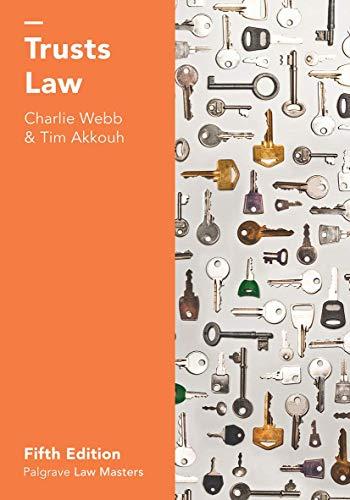Question
Please note: The articles must be related to the criminal justice field. Scholarly article review: Article title APA reference for article (please see page 29
Please note: The articles must be related to the criminal justice field.
Scholarly article review:
| Article title | |
| APA reference for article (please see page 29 of your required textbook for sample APA reference) | |
| Research question(s)/Hypothesis (es) | |
| Key variablespredictor/independent variables, control variables, and dependent variable; | |
| Populationjuveniles, adults, prisoners etc. | |
| Methoddescriptive qualitative (interviews/observations etc); descriptive quantitative (numerical/frequency/averages etc); correlation/regression; experimental; meta-analysis etc. measurement & procedures; Analysis-how were data analyzed? | |
| Conclusion/findings (what can be concluded from the study? What did the author(s) find? | |
| Strengths (contribution to the literature; how is this study different? What worked well) | |
| Limitations (what are some shortcomings in the study? can the findings be generalized? Are there any validity and reliability-related issues?--Discuss) | |
| Your overall critique of the article (please discuss what the author(s) did well, did not do well, and then offer suggestions that could improve the quality of the paper/study. Your critique should demonstrate an understanding of the study in relation to the field. |
Sample Template: Scholarly article review (DON'T NOT UES)
| Article title | The Impact of Residential Placement on Aggregate Delinquency: A State-Level Panel Study, 1997-2011. |
| APA reference for article | Dawkins, M., & Sorensen, J. R. (2015). The impact of residential placement on aggregate delinquency: A state-level panel study, 1997-2011. Criminal Justice Policy Review Journal, 26,85-100. |
| Research question(s)/Hypothesis (es) | Does residential placement lead to lower violent, property, or drug offense rates? |
| Key variablespredictor/independent variables, control variables, and dependent variable; | There are several key variables included in the article. Specifically, juvenile arrest rate is used as an indicator of delinquent involvement. Residential placement (includes both committed and detained) is the main predictor variable of interest. African American male youth, high school graduation rate, sworn police officer per capita, children below poverty, and region are control variables. Violent, property, and drug offenses are the dependent variables. |
| Populationjuveniles, adults, prisoners etc. | Juveniles (ages 10-17) are the primary target in the study. |
| Methoddescriptive qualitative (interviews/observations etc); descriptive quantitative (numerical/frequency/averages etc); correlation/regression; experimental; meta-analysis etc. measurement & procedures etc. | The authors employed a quantitative methodology. Specifically, they utilized state-level panel data to estimate the effect of residential placement on delinquency rates. In doing so, they employed random effects modeling that included time series cross-sectional data (TSCS). Please remember to add information about your article's analysis. |
| Conclusion/findings | The study's findings suggest residential placement does not lead to lower violent, property, or drug offense rates. Also, residential placement does not support the deterrence and incapacitation hypotheses based confinement. |
| Strengths (contribution to the literature; how is this study different? What worked well) | The study contributes to the juvenile justice literature as it appears to be the first to compare residential placement to incarceration. It justified the use of random effects and challenged the tenets of deterrence theories. |
| Limitations (can the findings be generalized? Validity/reliability) | It remains unclear how the findings can be generalized given there is no standard definition for residential placement. |
| Your overall critique of the article-- | Overall, the research is needed to close the gap in the juvenile justice literature and the current article is a step in the right direction. However, the authors could offer a clearer definition/measurement of deterrence theories. |
Step by Step Solution
There are 3 Steps involved in it
Step: 1

Get Instant Access to Expert-Tailored Solutions
See step-by-step solutions with expert insights and AI powered tools for academic success
Step: 2

Step: 3

Ace Your Homework with AI
Get the answers you need in no time with our AI-driven, step-by-step assistance
Get Started


